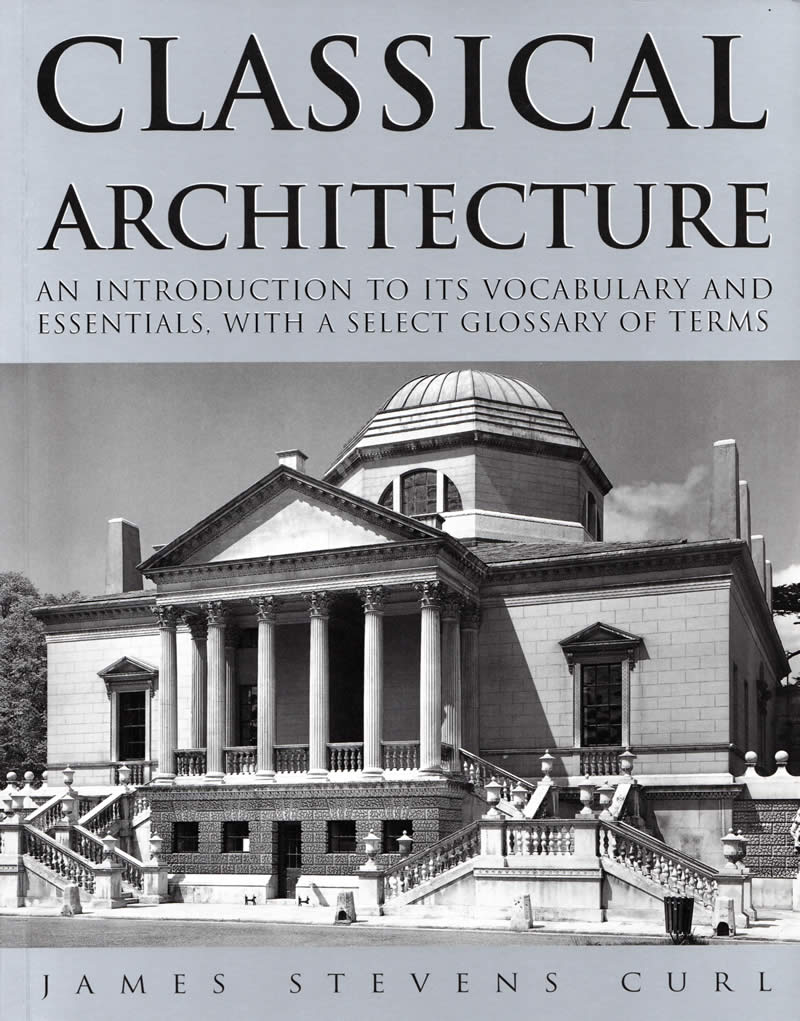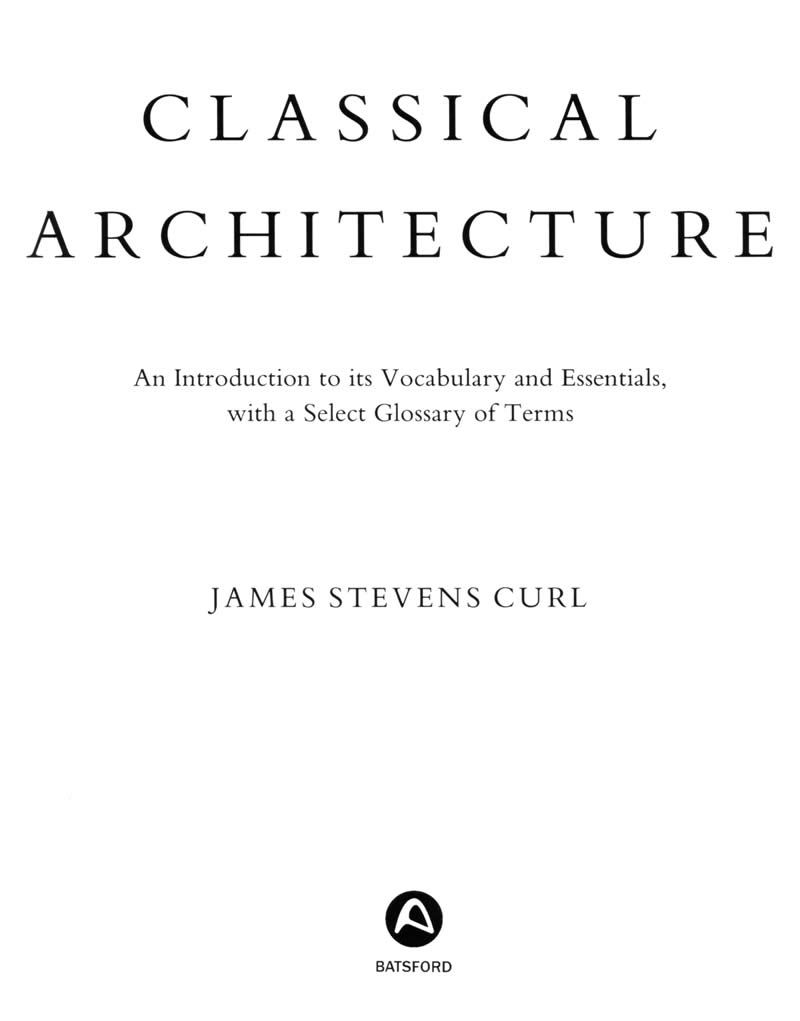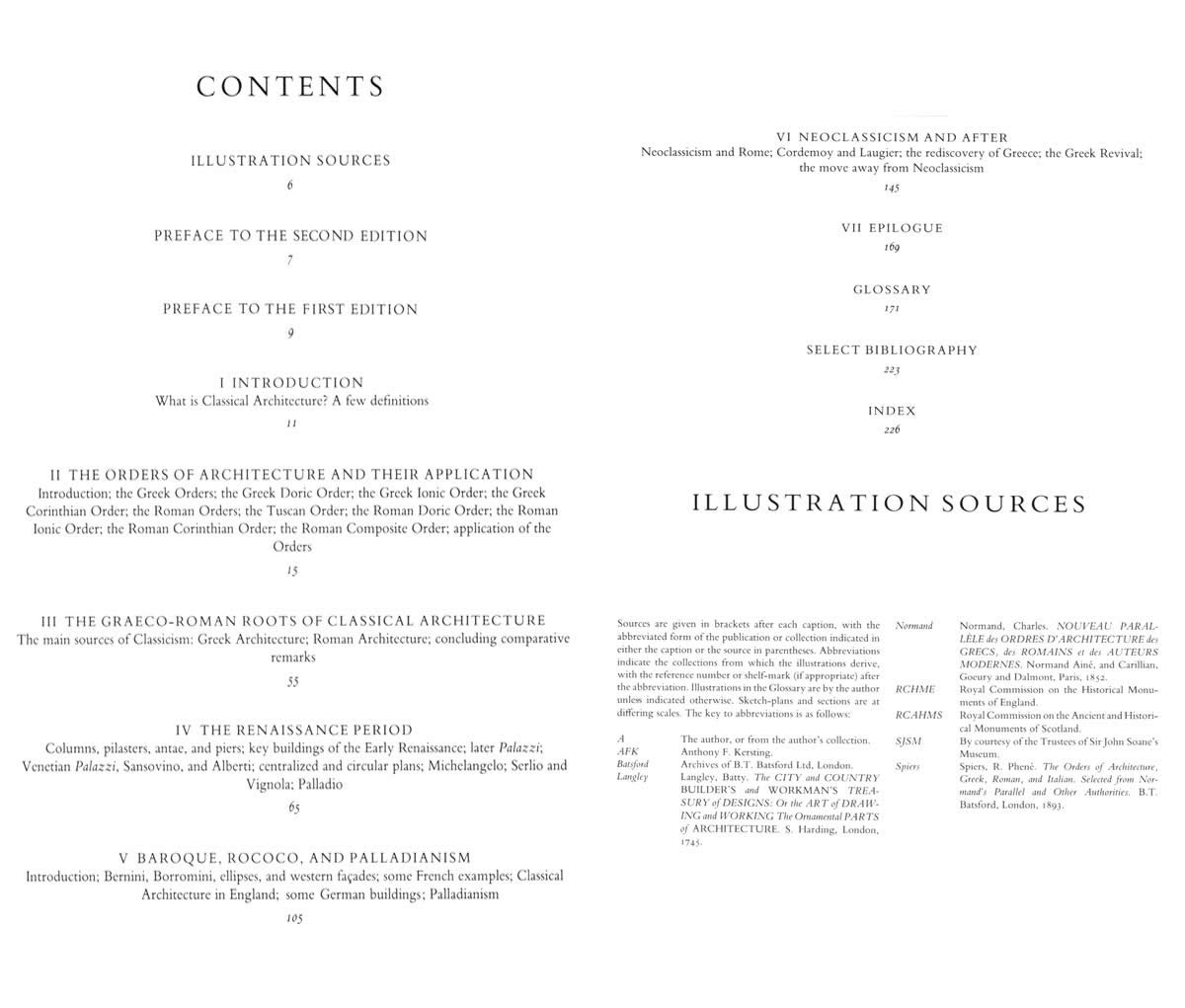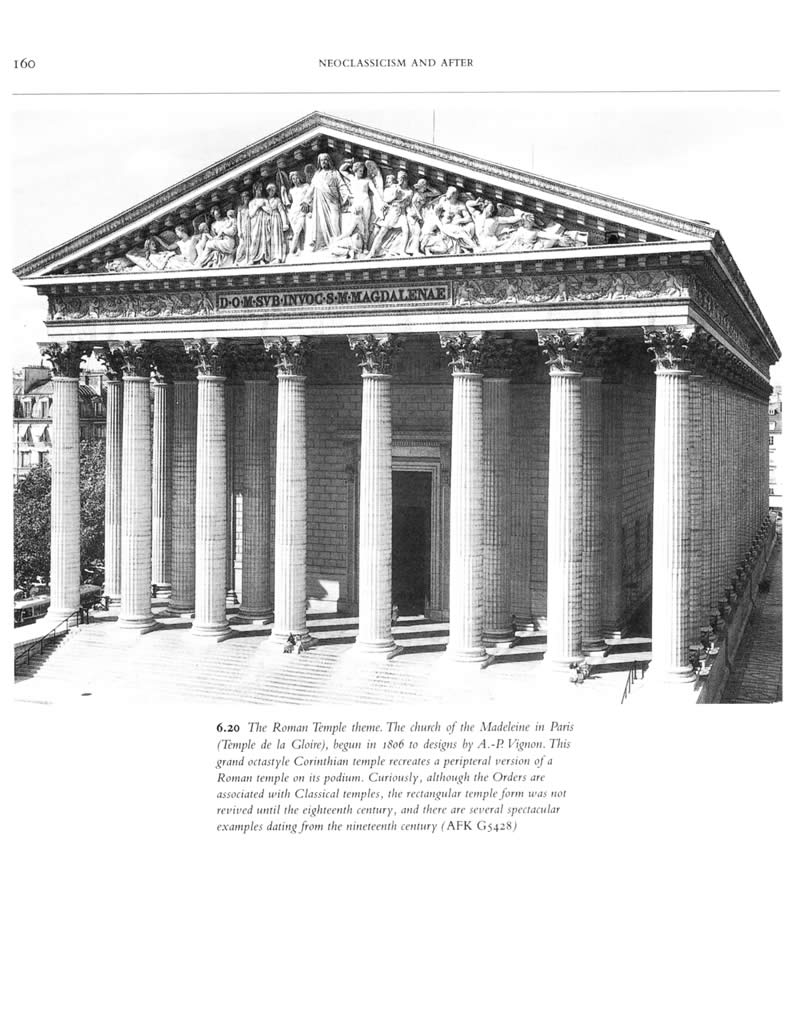Classical Architecture: Introduction to Its Vocabulary and Essentials, with a Select Glossary of Terms

Author : James Stevens Curl
Publisher : London: B.T. Batsford, Ltd., 2001
ISBN: 0-7134-8684-8 (pbk)
This illustrated book is concerned with the fundamental principles and various aspects of Classical Architecture, including a detailed, illustrated glossary that is almost a dictionary in itself. The text describes in clear, straightforward language the origins of Classical Architecture in Greek and Roman Antiquity, and outlines its continuous development, through its various manifestations during the Renaissance, its transformations in Baroque and Rococo phases, its re-emergence in eighteenth-, nineteenth-, and twentieth-century Neo-Classicism, and its survival into modern times. Words and pictures celebrate the richness of the Classical architectural vocabulary, grammar, and language, and demonstrate the enormous range of themes and motifs embraced by the subject.
Earlier edition of the book was:
Classical Architecture: An Introduction to its Vocabulary and Essentials, with a Select Glossary of Terms (London: B.T. Batsford Ltd., 1992, ISBN: 0-7134-6772-X [hbk.]).
Reviews
2001 & 2003 edns
‘In 1992, when Curl first published his acclaimed study, he expressed the hope that his book would “help students of Architecture to begin to have a feeling for a great language that can still be studied, not only in some of the best buildings in the world, but in thousands of decent works of Architecture that serve to enhance our towns, cities, and countryside with their well-mannered reticence”. In the ensuing decade, Classical design has enjoyed a resurgence — thanks in no small measure to the impact of Curl’s work. … In response to the growing interest in Classical principles, W. W. Norton has reissued Classical Architecture as an affordable paperback… Much to Curl’s credit, however, his book is aimed not just at the architectural trade but at any and all persons who are interested in better understanding the design concepts that have dominated Western architecture for more than 2,000 years. Curl explains the basics of Classical design, describing its techniques and outlining its history, with a directness and lucidity which set him apart from other commentators in the field… [His book] also features an extensive, 52-page glossary, which is in fact nothing less than an authoritative dictionary of Classical terminology. The full spectrum of information, from Aaron’s Rod to zotheca, is defined simply and clearly, and exemplified with a rich helping of Curl’s illustrations. In his epilogue, Curl modestly states that he wrote his book as an “attempt to provide an introduction to Classical Architecture, with definitions of terms, illustrations, and a brief narrative of its most significant features, in order to help to foster an understanding of the vocabulary and language of such Architecture”. In truth, his book is far from being just at attempt: it is one of the definitive works of architectural thought and practice.’
‘A masterly study... Profusely illustrated, it is both an invaluable textbook with detailed information about the handling of the Orders as well as an informative history of Western architecture.’
‘With Howard Colvin, Professor Curl is the great lexicographer of architecture, his Oxford Dictionary of Architecture (1999) being… incomparably the best now available. Classical Architecture is the clearest and most accessible account of the history and use of the language which has produced most of the great masterpieces of Western architecture.’
‘I hailed this book when it appeared in hardback. Now, with much improved… [text and] … illustrations, I hail it with ever more enthusiasm. Curl explicates expertly and elegantly the origins of Classical architecture in Greek and Roman Antiquity and traces its influences down to the 20th century. To the expert it will be a revelation in presentation; to the newcomer to the subject a source of enlightenment in daily environmental appreciation. Curl has produced a masterpiece of its kind.’
1992 edn.
‘Curl’s new book is not a work of reactionary criticism, although in the preface he rightly points out the difficulties of treating the subject today, when most schools of architecture deliberately avoid discussing the specifics of classical vocabulary, syntax, and theory ... Curl’s book is well suited to the student or professional who seeks a general survey ... the carefully captioned illustrations and the fifty-two page glossary at the end of the text are by far the most illuminating and useful aspects of the book ... Professor Curl provides the reader with an enjoyable and well-written introduction to the vocabulary and essentials of architectural classicism, He should be particularly commended for his inclusive perspective, insofar as he covers the architecture of several countries and continents, and treats of the diversity of ideas – occasionally even contradictory ones –which constitute the history of classicism ...’
‘... a lively and polemical book ... The book begins with an admirably clear and detailed account of the Orders of Architecture and their application. For clarity of presentation and accuracy of detail this could scarcely be bettered. It is followed by a fully illustrated historical survey of Classical buildings from the Renaissance to Neo-Classicism...The final section of the book is the spaciously laid out glossary, illustrated with many elegant engravings from Batty Langley, as well as photographs of buildings and details, and numerous clear drawings ...’
‘In this lucid survey Curl traces the persistent vitality of (the Classical ideal) from Graeco-Roman origins... The historical outline is admirably succinct, the stylistic detail thorough and precise, while the extensive illustrations make the book a delight.’
‘The best introduction for beginners.’
‘… an invaluable companion to the study of the subject and illustrates examples in a most informative manner. The preface is a marvellous cri de coeur for the necessity of retaining the Classical language of architecture in the modern world – not for imitation’s sake but to understand the rules that for four thousand years have evolved into a dynamic form of expression ... The author’s passion for his subject is evident, as when he describes the Bavarian Rococo Wallfahrtskirche Vierzehnheiligen ... Classical Architecture is ... invaluable.’
‘This well-illustrated and thorough book discusses the Orders themselves and gives a potted history of the Classical periods up to the present. It may therefore be of as much use to art history students as to practising architects. Typical of Curl is that he illustrates points with nicely perverse modern examples – Troost as well as Schinkel, nineteenth-century cemetery chapels, and, of course, “Greek” Thomson – so emphasising continuity.’




 LinkedIn
LinkedIn  Wikipedia
Wikipedia